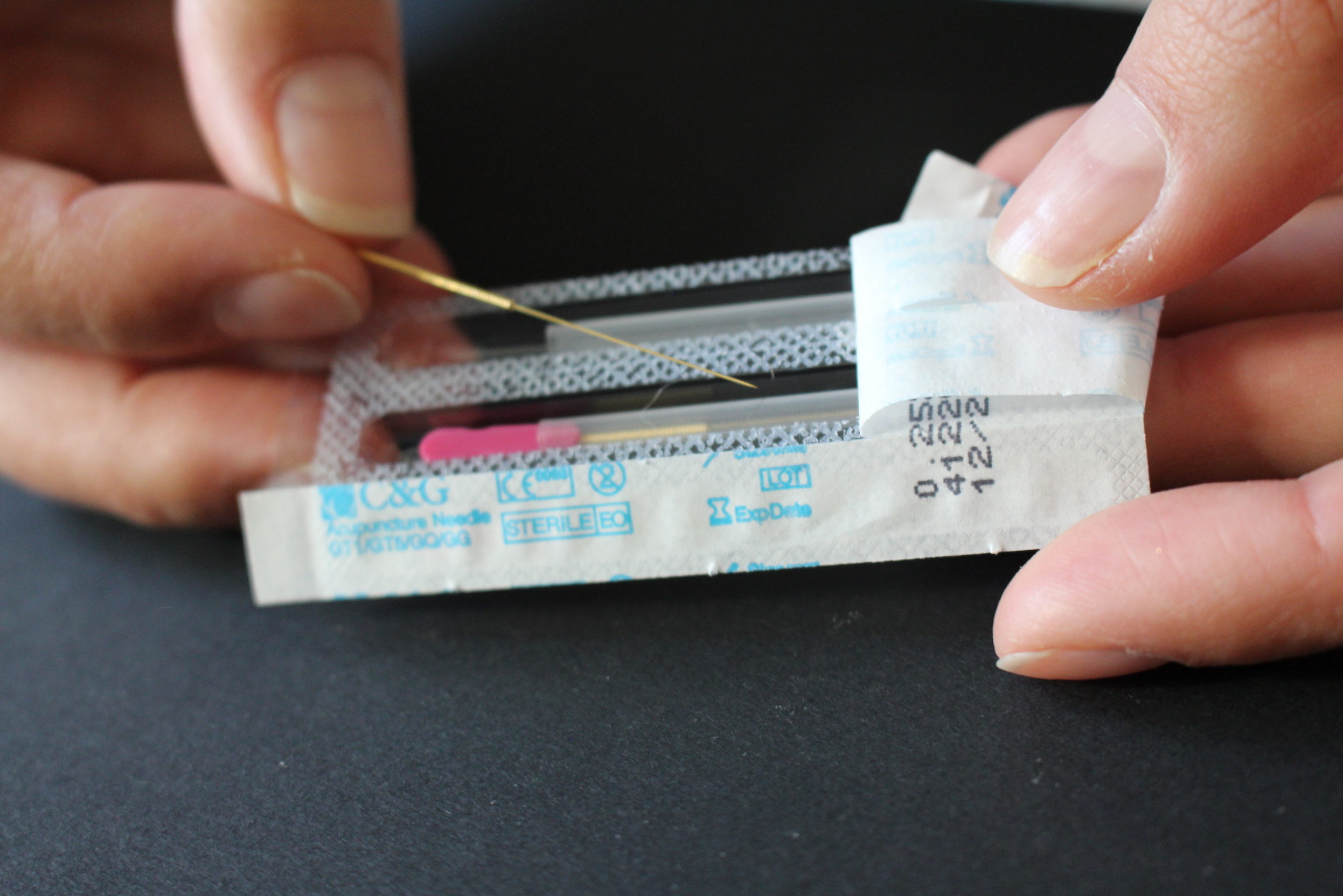How big are the needles? Are they Sterile? Will it hurt?
In this post, I will familiarize you with the acupuncture needle and provide answers to common questions. It is my hope that with this knowledge, you will gain a new understanding and gain a level of comfort with the acupuncture needle. Enjoy!
Acupuncture needles are different than any other needle you may be familiar with. They are thinner than hypodermic needles and much thinner than a sowing needle. Acupuncture needles vary in length and width and are measured in millimeters. In other words, they are extremely fine! As a matter of fact, the width of a needle is about two human hairs.
Check out this image that shows how tiny acupuncture needles are:

And look at this image! Approximately 40 needles can fit into a hypodermic needle!

All acupuncture needles are sterile, single-use, and made primarily of stainless steel. When inserted into the body, the acupuncture needles will activate your body’s Qi (pronounced chee), or vibrational energy. This will elicit sensation. We want sensation. It is your body’s response to activating, awakening and moving your Qi.
Although we do want sensation, I want to differentiate between positive and negative sensations that may occur when receiving acupuncture. Positive sensations include warmth, dullness, a feeling of openness and even the feeling of Qi moving through your body. If you feel any of these sensations while receiving an acupuncture treatment, embrace them! On the other side, negative sensations can include burning, electrical, pinching, heaviness, or an aching sensation. When these occur, please let your acupuncturist know so they can adjust the needle accordingly.
It is important to understand that everyone, every body, and even different parts of the body may generate a different vibrational response. There are certain areas on your body where you will barely feel any sensation and other areas that may produce more sensation. As long as the sensation is positive, embrace it! Be free of judgment and open to receive.
If you’d like to read about my first acupuncture treatment, please read my post, “How I got here.”
To conclude, I want to leave you with six evolutionary facts about acupuncture needles. Remember, the practice of acupuncture is over 3,000 years old.
- The first acupuncture needles were made of stone!
- During the 21st to 16th Century BC, slivers of animal bones were used as acupuncture needles.
- Bamboo trees were also carved into needles.
- It was around 475-221 BC when metal needles were developed.
- Acupuncture needles are made out of bronze, gold and silver. These options are wonderful for those with particular metal allergies.
- There are also needles for pricking and puncturing the superficial layers of the skin. These are known as five star needles.
Did this post help you to get to know the acupuncture needle?
Have you already had acupuncture? If so, please share your first experience in the comments below.
To read more about acupuncture needles, check out these references:
http://www.acos.org/articles/ancient-chinese-acupuncture/
http://aim.bmj.com/content/acupmed18/2/88.full.pdfsid=5aed504f-2d26-4b25-9c6f-0a8bcfb779bb
Disclaimer: This information is intended for general reference only. It is not a replacement for professional health advice. The content in this post intentionally does not provide dosage information or possible interactions with prescription drugs or other medications. Please contact a certified health practitioner such as a physician of Oriental Medicine or Herbalist before considering use. To schedule an appointment with Malerie, visit the services page.


